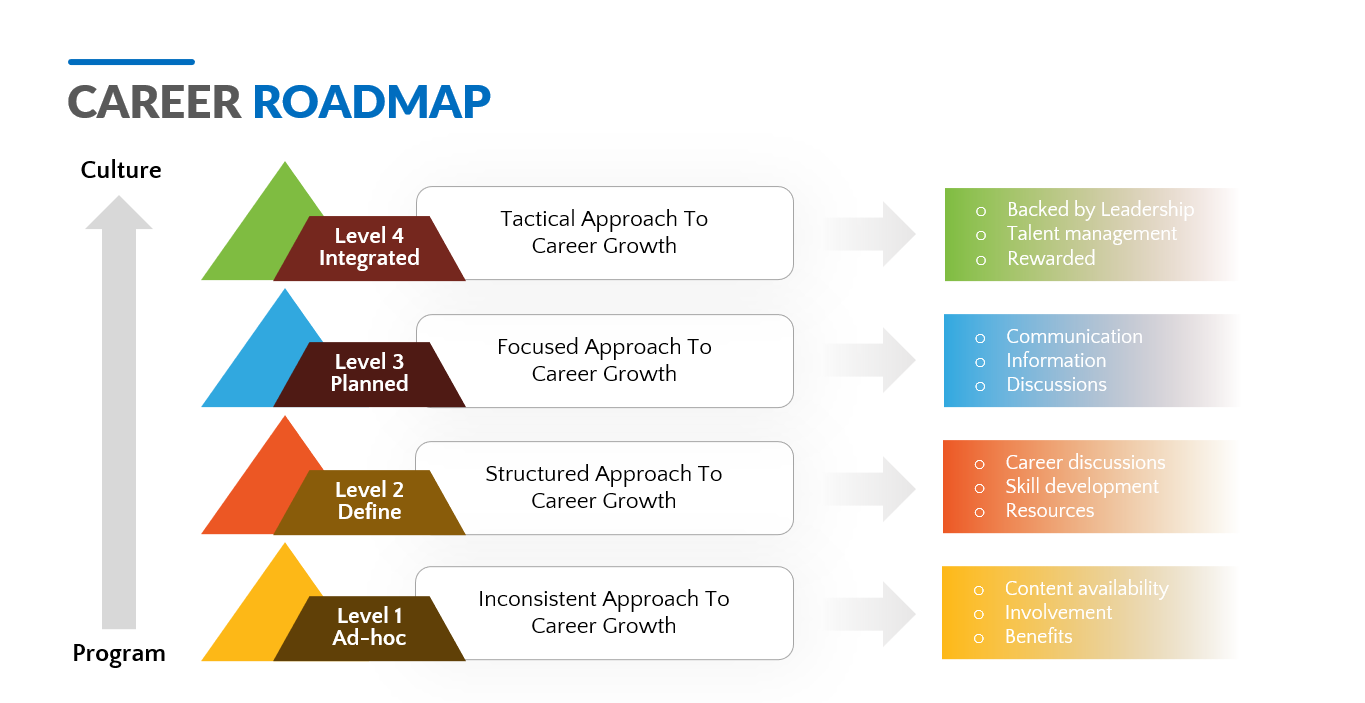Introduction
Let’s be real—tech is moving at lightning speed. Blink once and a new framework is trending. Blink twice and AI just replaced another role. So how do you future-proof your career in an industry that never sleeps?
Simple: you build a bulletproof career roadmap. Think of it as your GPS in the ever-evolving world of tech. It helps you move with purpose, dodge dead ends, and reach your dream role with fewer detours.
Why Having a Career Roadmap is Crucial in Tech
The Fast-Paced Nature of Technology
Tech doesn’t wait for anyone. What was hot yesterday is obsolete today. Having a roadmap keeps you grounded and ensures you’re building skills that matter.
Staying Relevant in a Competitive Field
Let’s face it—tech is crowded. There’s always someone younger, faster, or more updated. But your roadmap can be your competitive edge. It’s not about being the best—it’s about being the most prepared.
Step 1: Define Your Long-Term Vision
What Do You Really Want From Your Tech Career?
Want to build the next unicorn? Or just want a remote job with decent pay and work-life balance? Either way, you need to know your “why.”
Role vs. Impact
Focus less on job titles and more on the kind of problems you want to solve. Want to impact healthcare? Maybe healthtech is your calling. Want to build tools that change how people learn? Edtech might be your playground.
Step 2: Identify Your Core Skills and Interests
Technical vs. Soft Skills
Yes, you need to know your tech stack—but your communication, leadership, and problem-solving skills will make or break your growth.
Follow Your Curiosity
If you’re naturally drawn to something—say, cybersecurity or mobile dev—that’s usually a sign. Build your roadmap around your interests to avoid burnout later.
Step 3: Research High-Demand Tech Roles
Popular Tech Paths in 2025 and Beyond
-
AI/ML Engineer
-
DevOps Specialist
-
Cloud Architect
-
Cybersecurity Analyst
-
Data Engineer
-
Product Manager
Use Market Data and Job Trends
Use platforms like LinkedIn, Stack Overflow Insights, and Glassdoor to research salaries, hiring trends, and in-demand skills.
Step 4: Map Your Skills Gap
Perform a Personal SWOT Analysis
Break down your Strengths, Weaknesses, Opportunities, and Threats. It gives you a clear picture of what you need to improve and where you shine.
Use Skills Matrix Tools
Use tools like SkillUp or Notion templates to compare your current skills against job requirements.
Step 5: Create a Learning and Certification Plan
Free vs. Paid Learning Platforms
-
Free: freeCodeCamp, YouTube, Coursera (audit mode)
-
Paid: Udemy, LinkedIn Learning, Pluralsight
Should You Get Certified?
Certifications like AWS, CompTIA, and Google Cloud can boost credibility—especially if you’re pivoting careers or lack a formal degree.
Step 6: Build a Strong Portfolio
Projects that Prove You Know Your Stuff
Don’t just follow tutorials—build real-world projects. Clone apps, solve real problems, contribute to open source.
GitHub, Personal Website, and Case Studies
Keep everything well-documented and polished. Your GitHub should speak louder than your resume.
Step 7: Network Like a Pro
Online and Offline Communities
Join Discord servers, subreddits, tech meetups, or hackathons. You never know when an opportunity will pop up from a DM or a coffee chat.
The Power of Mentors
Find someone 5–10 years ahead of you and learn from their wins—and their mistakes.
Step 8: Land Strategic Roles
Don’t Chase Titles—Chase Experience
Startups may offer more hands-on learning than big-name corporations. Choose roles that stretch you.
How to Pick the Right Company
Look for companies with strong engineering culture, growth paths, and tech stack relevance.
Step 9: Set Short-Term and Long-Term Milestones
The 1-3-5 Rule for Career Growth
Set goals for 1 year (skills), 3 years (roles), and 5 years (impact). Break them into quarterly sprints.
Tracking Your Progress
Use tools like Trello, Notion, or even a simple spreadsheet to track what you’re learning, building, and achieving.
Step 10: Stay Agile and Evolve
Pivoting When Needed
It’s okay to switch tracks. Maybe frontend wasn’t your thing and backend excites you. The roadmap should flex with your evolution.
Keeping Up with Trends
Subscribe to tech newsletters, listen to podcasts, attend webinars. Always keep one foot in the future.
Common Pitfalls to Avoid in Tech Career Planning
-
Chasing hype instead of skill depth
-
Ignoring soft skills
-
Staying in your comfort zone too long
-
Not asking for feedback
-
Neglecting mental health in the name of hustle
Conclusion
A bulletproof tech career roadmap isn’t a static plan—it’s a living, breathing strategy. It evolves as you grow, learn, and adapt. The goal? To be intentional, not accidental, about your career moves.
You don’t need all the answers today. But you do need a direction. Start small. Stay consistent. And remember: in tech, the ones who win are the ones who keep building—skills, networks, and experiences.
FAQs
1. What’s the best tech field to get into right now?
AI/ML, cybersecurity, and cloud computing are currently booming and expected to grow even more in the next 5–10 years.
2. Do I need a degree to succeed in tech?
Nope! Many successful developers and engineers are self-taught. What matters most is your portfolio, skills, and problem-solving ability.
3. How do I know if I’m making progress?
Track your goals, build projects, get feedback from mentors, and compare job descriptions to your current skillset.
4. What if I want to switch careers into tech?
Start with free courses, build a solid portfolio, and consider entry-level or internship roles to get your foot in the door.
5. How often should I update my roadmap?
At least once a quarter. Tech changes fast, and so will your goals and interests.
Read more Articles about Tech Career Growth
